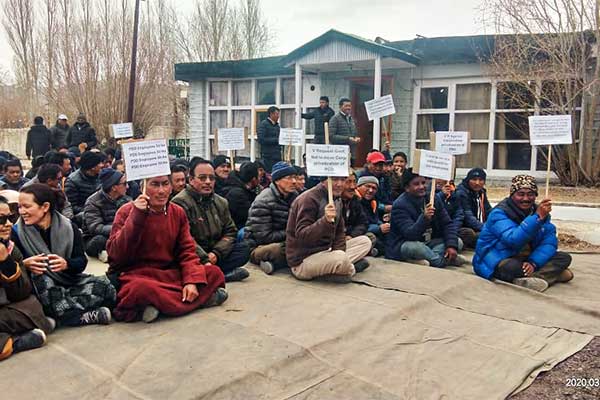Implications of corporatisation of the power sector

Ladakh Power Development Department (PDD) was carved out of the erstwhile J&K Power Development Department and remains a fully-owned government department. The department’s role and responsibilities include buying electricity from power generating companies and selling it to consumers of different categories; domestic, commercial, industrial and government, to build transmission lines and supply electricity to remote rural areas i.e. rural electrification.
After J&K Re-organisation Act, 2019 was implemented, the State Administrative Council decided to unbundle the J&K Power Development Department (JKPDD) into J&K Power Corporation Limited (JKPCL), J&K Power Development Corporation Limited (JKPDCL) and Ladakh Power Corporation Limited (LPCL). Further, the Administrative Council proposed the corporatisation of Ladakh Power Development Department into Ladakh Power Corporation Limited.
Many people wonder why a government-owned power department is being converted to a public sector corporation. The Source of Power in Ladakh region with the installed capacity of 45 MW and 44MW Hydro Electric Projects, is owned by National Hydroelectric Project Corporation Limited (NHPCL) at Alchi and Chutuk in Leh and Kargil district, respectively and Northern Grid through 220/33KV Alusteng Grid Station in Kashmir.
At present, the ratio of domestic consumers to those in other categories is 80:20. The total power requirement during peak demand is 50 MW, and is met by 22 MW (Alchi), 4 MW (Chutuk) and 24 MW from Northern Grid during winter months from November to February. During these months, the total power generation from the above projects is drastically reduced due to less water in the Indus and Suru rivers. In the summer, the power requirements of Ladakh are fulfilled by Alchi and Chutuk projects and surplus power (around 40MW) from these projects is supplied to the Northern Grid.
The need to bring structural reforms by converting a government-owned department to a public sector undertaking was realised when studying the issue of energy loss. For instance, the cumulative annual energy pump of all the feeders is 150MU out of which 130MU is billed and 100MU is realised. The difference of 20MU is technical and 30MU is commercial loss. Collectively, 50MU is called Aggregated Technical and Commercial (AT&C) losses.
The technical losses can be reduced to an acceptable level by improving worn-out infrastructures such by replacing old conductors, transformers and rotten poles. Commercial losses can be controlled and monitored by implementing power reforms such as smart metering for all categories of consumers, feeder metering, distribution transformers metering, automatic data logging for all distribution transformer and feeders and Supervisory Control and Data Acquisition (SCADA) system and Distribution Management System (DMS) and IT application such as GIS mapping, consumer indexing etc. The use of smart meter/prepaid meter for various categories of consumers, billing and collection efficiency can be improved along with recovery of arrears. Like various service providers for digital TV and telecommunication, this mechanism works on advance payment for electricity.
Currently, 40% of AT&C losses are due to non-payment of electricity bills, power theft, un-metered consumers, and illegal consumers who are accessing electricity without registering their connections. Many of these factors can be addressed by transforming a government-owned department to a public sector undertaking as a distribution company.
In case, these losses cannot be controlled by corporatizing the sector, the government may move towards privatising the sector. Operation and maintenance of power sector may then handed over to to private players, which may have an adverse impact on consumer tariff. The corporate/private sector is driven by profits and as part of their strategy to remain viable, privatisation will invariably lead to increase in tariffs and rationalisation of manpower by reducing the existing work force. Such processes of rationalisation will not only demoralise people but also increase the stress level of the remaining staff members.
Recently, there was a move to privatise the power sector in Bihar, which was opposed by employees who condemned the move. Bihar’s Energy Minister, Bijendra Prasad Yadav wrote to Union Power Minister, R K Singh on 13 February, 2020 advising against privatisation of the power sector. News reports mention that the power sector in Bihar has improved tremendously and achieved many of its targets within the expected time frame through the efforts of employees working in the sector. Transmission losses have reduced drastically from 60% to 29%.
The present tariff structure in Ladakh is subsidised. If we want this structure to continue, all electricity consumers must use power judiciously and support and co-operate with employees of Power Development Department to reduce losses to an acceptable level in accordance with guidelines of prevailing regulatory commission.
By Stanzin Toldan
Stanzin Toldan is an Assistant Engineer with Power Development Department, Ladakh

Like!! Really appreciate you sharing this blog post.Really thank you! Keep writing.
Thank you